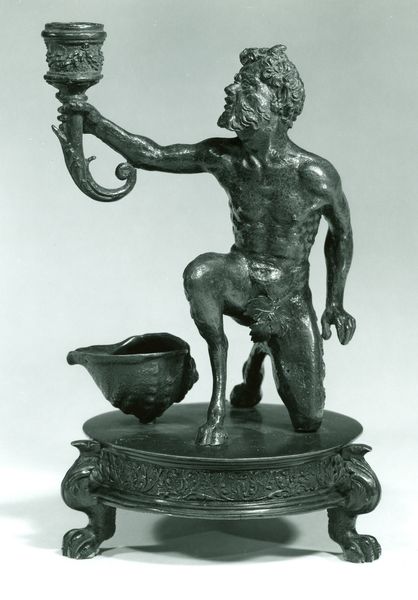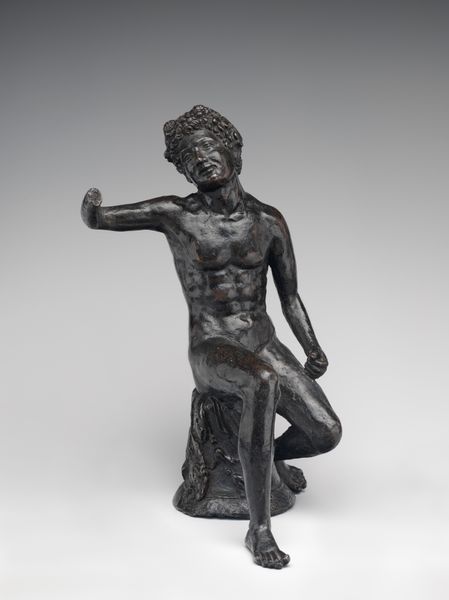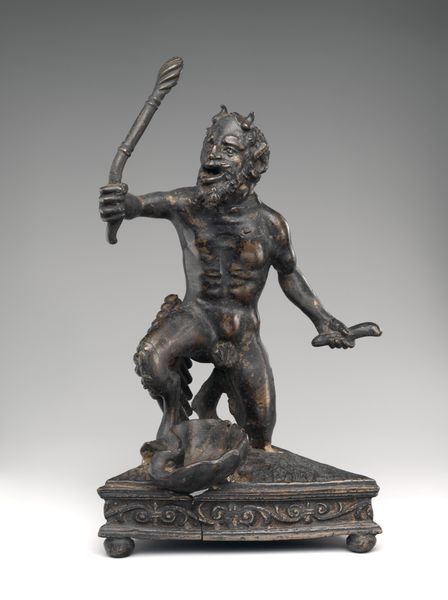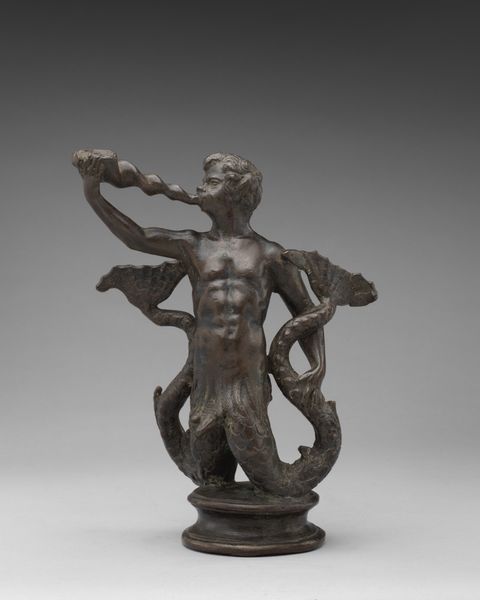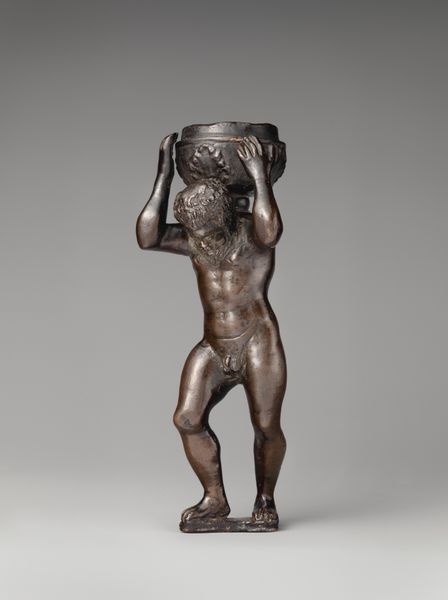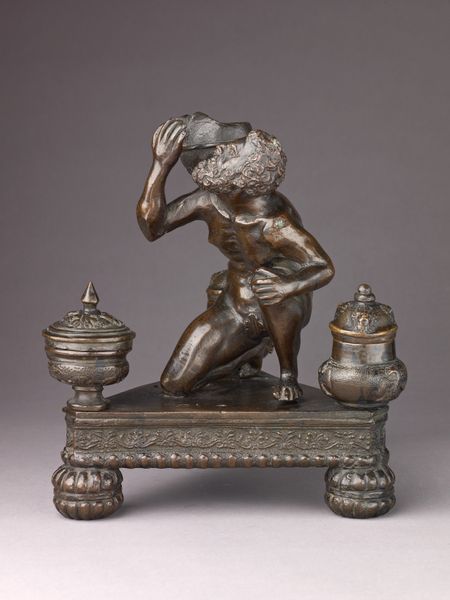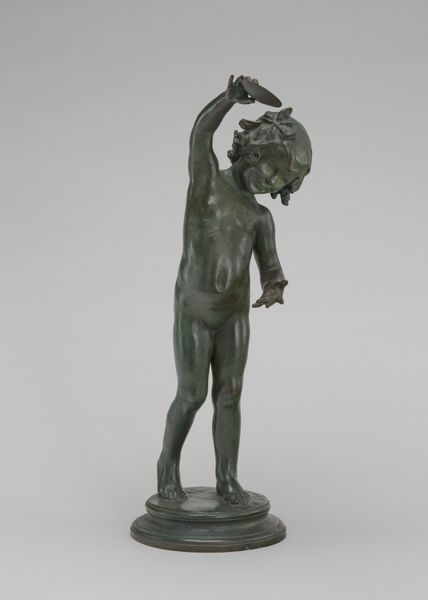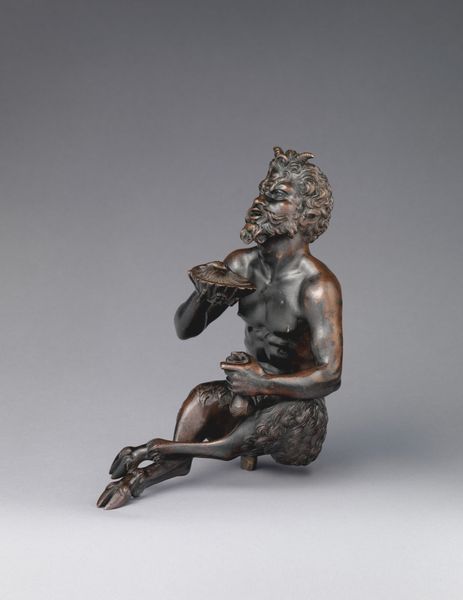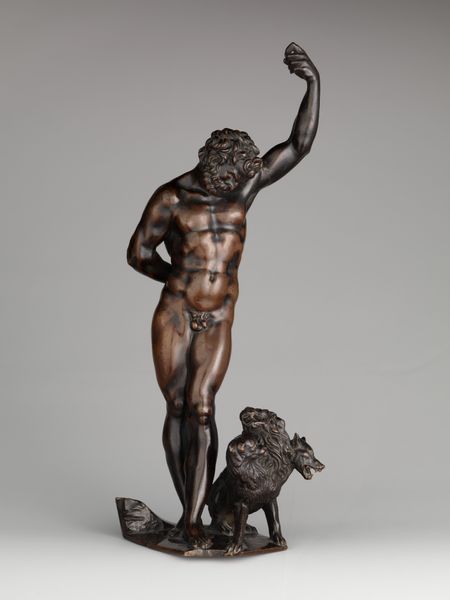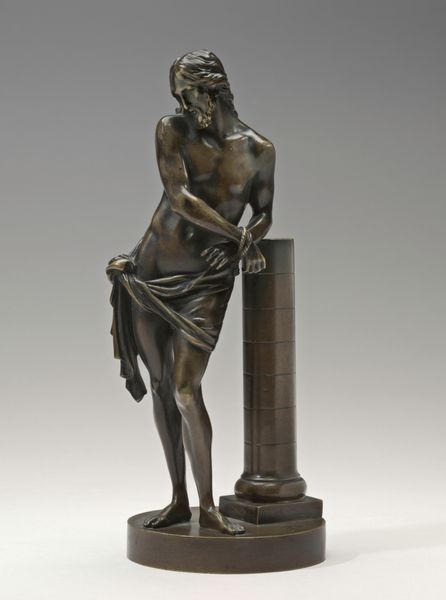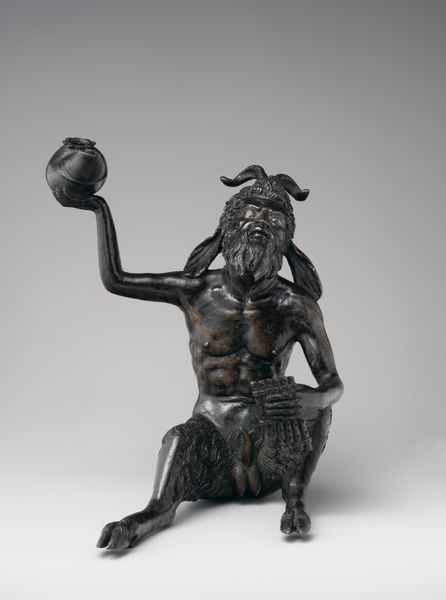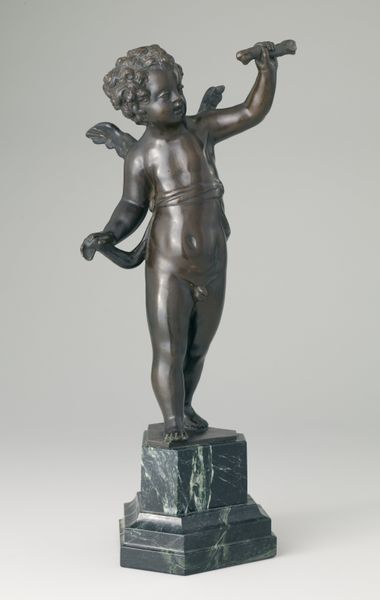
bronze, sculpture
#
allegory
#
sculpture
#
bronze
#
figuration
#
11_renaissance
#
sculpture
#
decorative-art
Dimensions: Overall (confirmed): 8 × 6 × 6 1/4 in. (20.3 × 15.2 × 15.9 cm)
Copyright: Public Domain
This bronze statuette was made by Andrea Briosco, called Riccio, in Padua, Italy, during the Renaissance. Riccio, whose name means "curly," was renowned for his small bronzes, which captured the humanist spirit of the time. Here, a satyr—a mythical creature, part man, part goat—is caught in a moment of revelry. His face is lifted in a joyous shout, a drinking cup raised high. Consider the satyr's dual nature: human intellect combined with animalistic desires. This tension embodies a key Renaissance preoccupation with the complexity of human nature, our capacity for both reason and instinct. Riccio draws on classical mythology, but he also infuses the figure with a palpable sense of energy and emotion. The statuette invites us to reflect on the interplay between our higher selves and our more primal urges, prompting a deeper understanding of our own humanity.
Comments
No comments
Be the first to comment and join the conversation on the ultimate creative platform.
